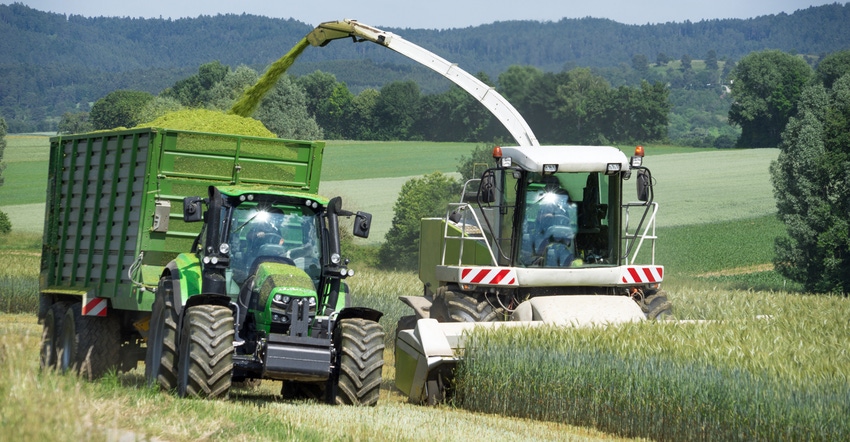August 10, 2021

There are many keys to corn silage harvest, and while they are important every year, there can be an added importance in a year when concerns may persist regarding sufficient forage inventories as every pound of forage you can successfully preserve counts more than ever.
Follow these steps for a successful silage harvest. There are also links to additional resources to make sure you optimize your harvest and storage.
Storage planning
It is never too late to think about your silage storage resources. Plan ahead to assure that storage space is adequate for the tonnage that needs to be stored.
Improper storage setup and overfilling storages can lead to significantly greater shrink loss.
It is also important think about separating forages by quality to optimize their use by different animal groups.
Read this article on strategic forage storage planning.
Harvest planning
There are many competing interests this year in terms of balancing forage inventory needs and potential weather-related yield challenges with high commodity prices and opportunities to offset purchased feed cost with forage quality.
Here are some things you can do to prepare:
• Work with a nutritionist and other key team members to determine goals for corn silage.
• Determine forage quantity needs and how many acres are needed to meet this goal.
Check out this new spreadsheet tool to determine forage acreage needs.
Miner Institute has pointers on how to manage forage digestibility to combat high commodity prices and tips for feeding brown midrib corn.
Set up harvester for optimum performance
The corn harvester plays an integral role in optimizing your corn silage.
Careful attention needs to be paid to corn silage processing score and length of cut throughout the harvest season.
See this Kernel Processing Information Series for information from a recent study completed in New York state with funding from New York Farm Viability Institute.
Make sure the chopper is properly set up before silage harvest begins. Always monitor chopper performance as field or crop conditions can change.
Read more about the effects of corn plant characteristics on corn silage processing scores.
Set kernel processing goals based on green samples, and consider potential improvements during fermentation a bonus.
Preserve every pound of dry matter
When there are concerns about adequate feed inventories, there is no room for spoilage losses.
Monitor your fields and harvest at the correct whole-plant dry matter and make every effort to ensile the crop properly, particularly when using bunks and piles as shrink losses can be the highest in these storage systems. Follow these tips:
Pack, pack, pack. Work to achieve a high density by properly packing the silage. This will reduce shrink losses, help improve feed quality and increase storage capacity.
Consider the use of scientifically backed bacterial inoculants.
Immediately cover forage with plastic. Oxygen barrier products are worth the investment.
Lawrence is a dairy forage systems specialist with Cornell Pro-Dairy.
Source: Cornell Pro-Dairy, which is solely responsible for the information provided and is wholly owned by the source. Informa Business Media and all its subsidiaries are not responsible for any of the content contained in this information asset.
You May Also Like




